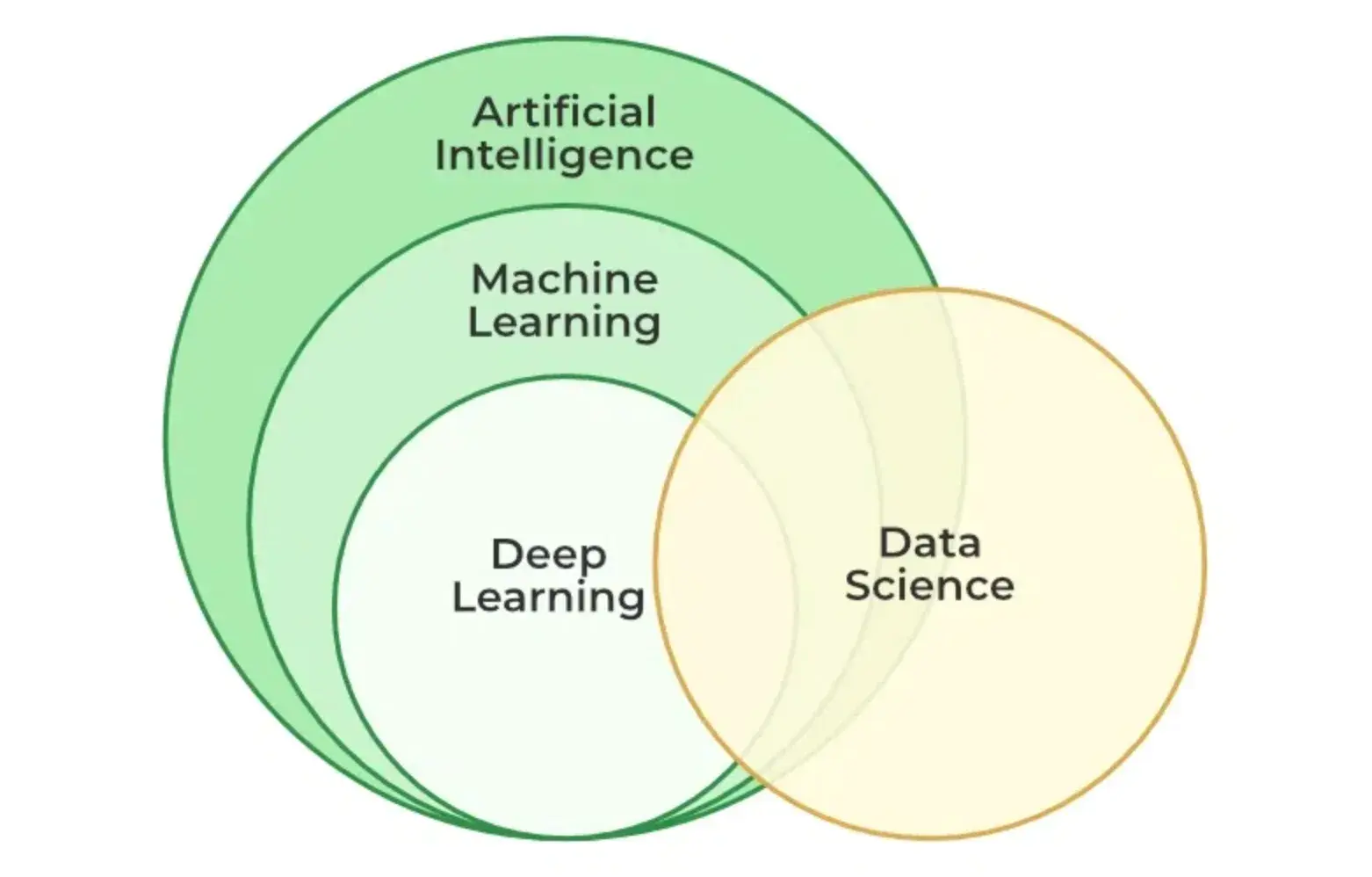
A comparison of Artificial Intelligence, Machine Learning and Deep Learning
Deep learning is a subset of machine learning that leverages neural networks with multiple layers to model complex patterns in data. Deep learning is a powerful and rapidly advancing field within artificial intelligence (AI).
Similarities:
1. All three fields aim to create systems that can perform tasks that typically require human intelligence. This includes tasks such as recognition, decision-making, language understanding, and problem-solving.
2. AI, ML, and DL are all used to automate tasks. They can process large volumes of data quickly and efficiently, which is particularly useful for tasks that would be time-consuming or impractical for humans to perform manually.
3. AI, ML, and DL systems all rely heavily on data to function. A fundamental characteristic shared by AI, ML, and DL is the ability to learn from experience. These systems improve their performance as they are exposed to more data. They use data to learn patterns, make predictions, and improve over time. The quality and quantity of data significantly influence the performance of these systems.
4. AI, ML, and DL all draw from various disciplines, including computer science, mathematics, statistics, and cognitive science. This interdisciplinary approach helps in developing more robust and versatile systems.
5. The three fields overlap significantly in their application areas. Common applications include computer vision, natural language processing, speech recognition, and autonomous systems. For example, AI, ML, and DL technologies are all used in developing self-driving cars and virtual assistants.
6. ML and DL are subsets of AI, meaning they are built upon fundamental AI principles. ML uses statistical techniques to enable machines to improve with experience, while DL uses neural networks to achieve this. Despite their differences in approach, they share a common foundation in leveraging algorithms to process and learn from data.
Differences:
1. A first look at the meaning of the three concepts: Artificial Intelligence (AI) is the broadest field encompassing all aspects of making machines intelligent, capable of performing tasks that typically require human intelligence. Machine Learning (ML) is subset of AI focused on developing algorithms that enable computers to learn from data. Deep Learning (DL) is a specialized subset of machine learning that uses deep neural networks to learn from large amounts of data.
2. Comparison in terms of scope: AI includes various approaches and technologies, including machine learning, rule-based systems, genetic algorithms, and more. ML algorithms include supervised learning, unsupervised learning, and reinforcement learning. They require feature extraction and selection processes to perform effectively. DL is particularly effective for tasks such as image and speech recognition, natural language processing, and autonomous driving, where large datasets are available.
3. Comparison in terms of Objective: The goal of AI is to create systems that can perform any intellectual task that a human can do. The objective of ML is to create models that can generalize from training data to unseen data, improving their performance on specific tasks over time. The aim of DL is to enable models to automatically learn representations from data, capturing intricate patterns and features without the need for manual intervention.
4. Learning algorithm: Traditional machine learning algorithms often rely on feature extraction, which requires human expertise to determine the features that will be used for learning. Deep learning automates this process by using multiple layers to learn representations of data at different levels of abstraction. This reduces the need for manual feature extraction and allows the model to learn directly from raw data.
5. Computational Power and Data Requirements: Deep learning models typically require more computational power and large amounts of data compared to traditional machine learning models. This is because the multiple layers of neurons in deep networks require extensive processing to adjust the weights and biases during training.